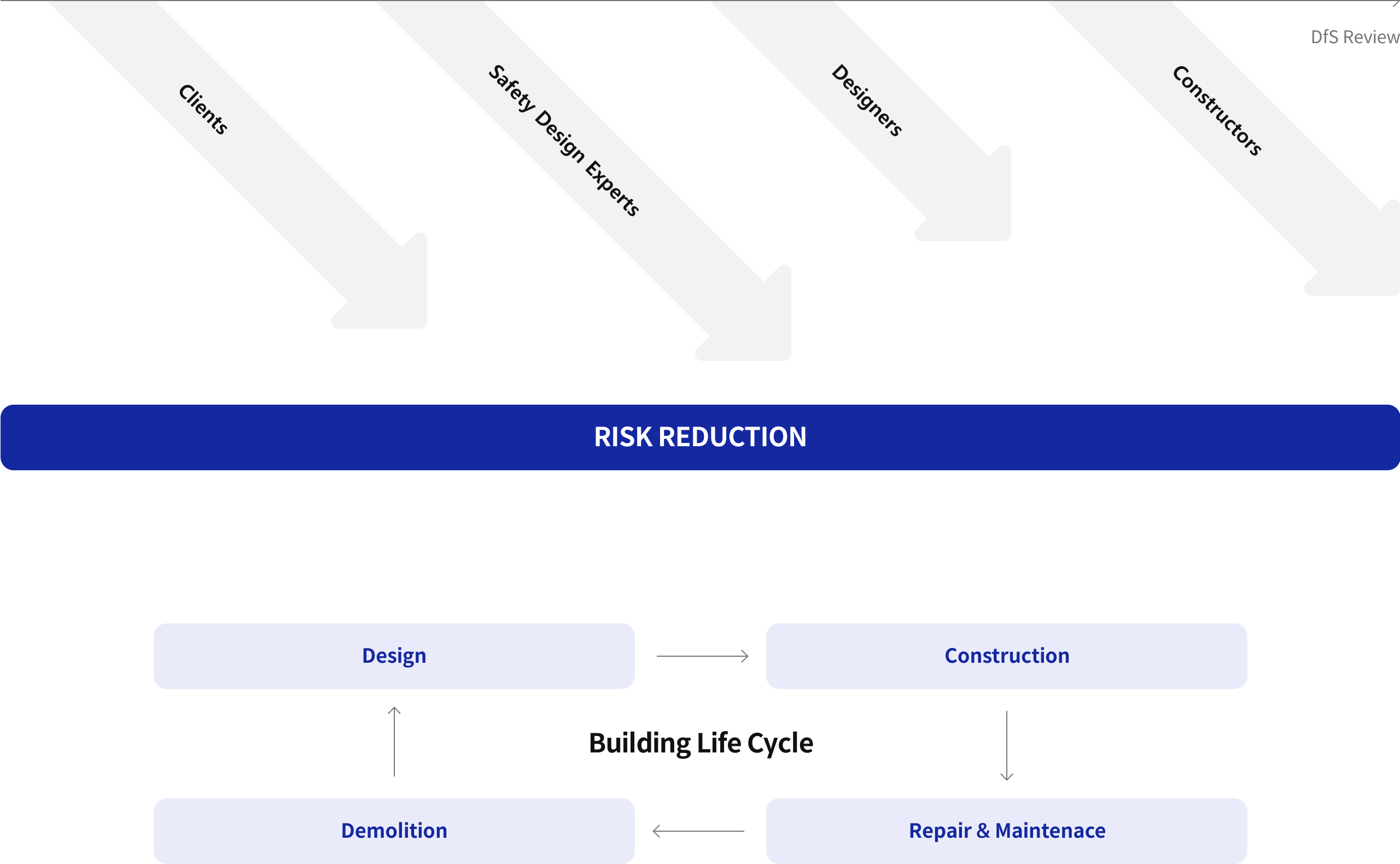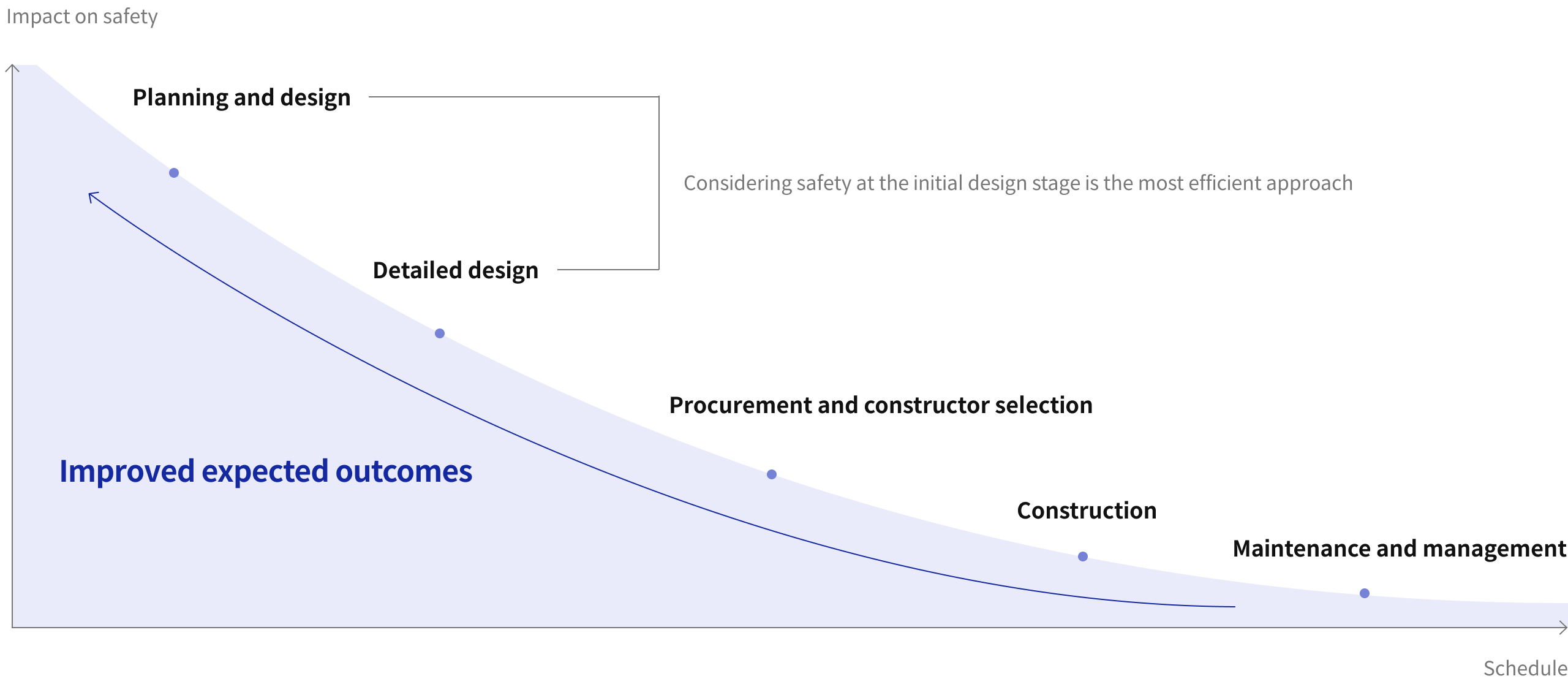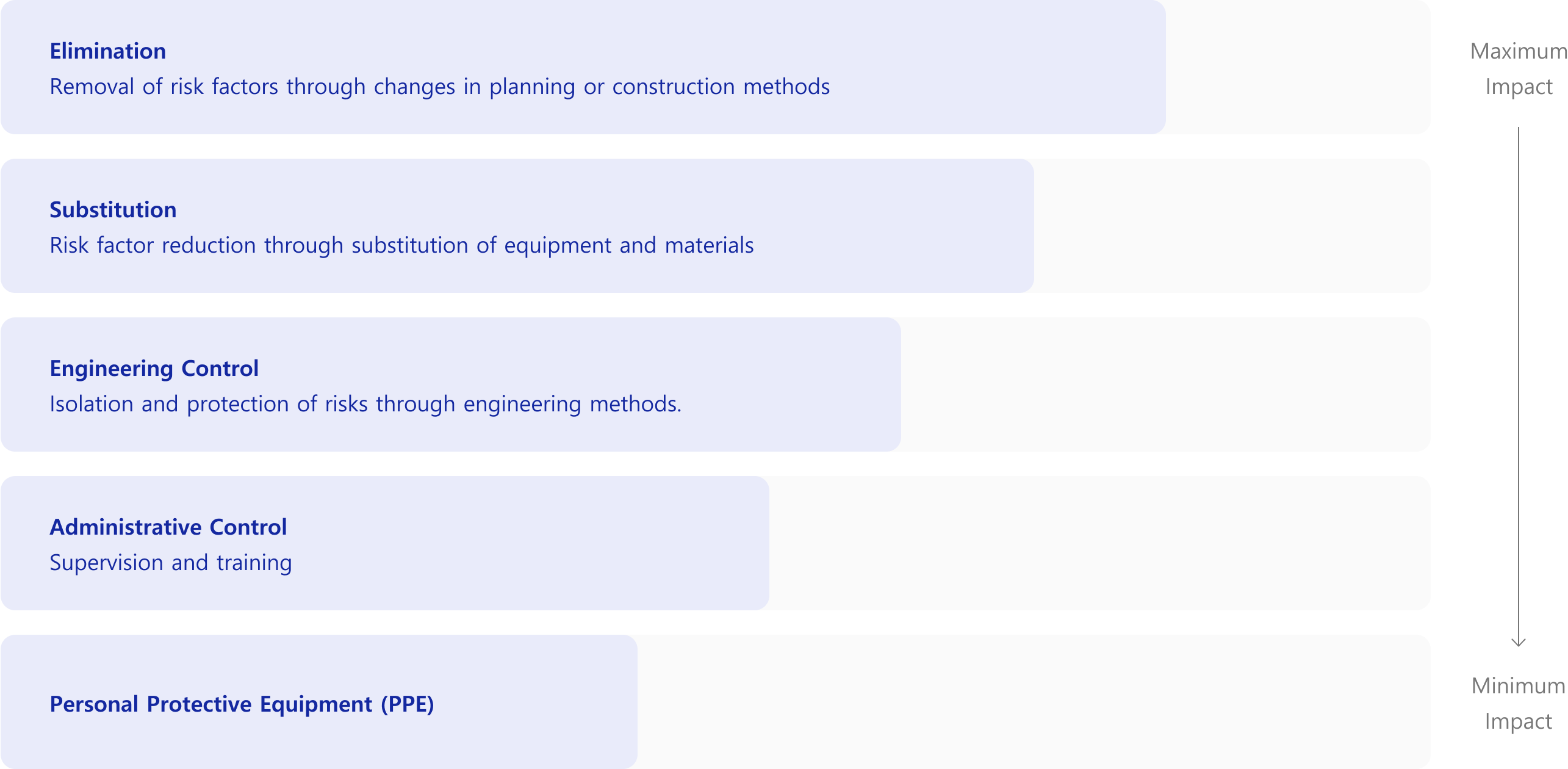Design for Safety (DfS) Review
In response to the accelerating demand for a safety paradigm shift, Samsung C&T’s E&C Group has established a comprehensive Design for Safety (DfS) process covering design, construction, use, and management, and has built a DfS Library. We are committed to fulfilling our social responsibility by promoting a Safety First culture in the Korean construction industry and leading the way in ESG management.
Design for Safety (DfS) Definition
An activity that identifies and eliminates or mitigates potential risk factors throughout the entire lifecycle of a building, from design to construction stages, by design and technical control.

Design for Safety (DfS) is a progressive and technical safety management concept that transcends the traditional safety management approach of aiming to minimize damage in the event of an accident, by focusing on mitigating and fundamentally eliminating risk factors throughout the design and construction stages.
- Participation of clients, safety design experts, designers, and constructors from the design stage
- Safety design utilizing a "risk factor database" to ensure the safety of construction and users
Expected Benefits
The risk reduction effect of design for safety is maximized when it is applied in the early stages of a project.
Time/safety Influence Curve(Szymberski 1987)

DfS Using Hierarchy of Controls(NISOH/PtD - Prevention Though Design)

- The risk reduction measures ranked from lowest to highest effectiveness are: personal protective equipment usage -> administrative control -> engineering control -> substitution -> elimination.